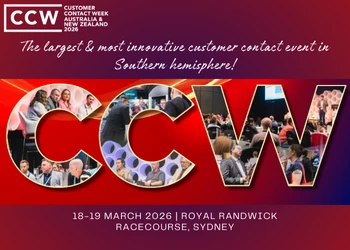Tapping the Powerful U.S. Hispanic Market
Add bookmarkIf the U.S. Hispanic population were its own country, it would rank among the most 25 populous countries in the world.
"I look at the U.S. Hispanic market as a country," said Tony Ricciardi, president and co-founder of Listen Up Espanol, a Portland, Maine-based company that manages a call center in Mexico that fields call from the US Hispanic market.
Ricciardi gets excited when talking about the breadth and impact of the U.S. Hispanic market.
"It’s a country within a country. Yet, yet," he said, voice animated, "corporate America still ignores it. It’s beyond me."
[eventPDF]
Listen Up Espanol is one of about three American companies, in Ricciardi’s estimation, that serves the U.S. Hispanic population for direct marketing response calls. Founded in 2006 by Ricciardi and partner Craig Handley, Listen Up has expanded both its size and profit exponentially since. Although revenue dipped a bit with the down American economy in 2010, 2011 expectations forecast $17 million in revenue this year. That number is up $7 million from last year and stratospherically above the $212,115 the company made in its first year.
Listen Up’s niche is taking sales order for products ordered from TV infomercials. Jack LaLanne’s Power Juicer, the Magic Bullet blender and the Ab Rocket are some popular ones. The organization’s call center fielded 1.8 million calls in 2010.
"A lot of people still aren’t recognizing the economic strength of the U.S. Hispanic market," Ricciardi said. "I think in the next year or two people are going to start realizing that you shouldn’t be ignoring it and embrace it."
Ricciardi explained that clients report the U.S. Hispanic market exhibits more loyalty to companies and higher donation rates (Listen Up also works with nonprofit clients) than the population at large. Combine these findings with the robust purchasing power of the population – over $1 trillion and expected to increase by 25% by 2015 – and the U.S. Hispanic market is poised to be a driving force for companies in the coming years.
But tapping into this emerging market for call centers isn’t simple. It requires different training, different scripts and different approaches for call center agents.
"We spend a lot of time on culture," Ricciardi said. "We focus on the scripting to get a high conversion rate."
A high conversion rate for the U.S. Hispanic market can be determined at the outset of a call.
"For the U.S. Hispanic market it’s important to establish a relationship on the beginning of the call," Ricciardi said. "So the greeting for a Spanish call might be different than for the Anglo market. The front end tees you up for the back end in terms of what we can ask for."
The San Jose Group of Chicago is one of the top-3 Hispanic marketing companies in the U.S. George San Jose, president of the company, backs up Ricciardi’s observation. He insists that to reach the Hispanic market, it is essential to "understand how much family is integral to the Hispanic lifestyle." This matters not only in the types of products and marketing that is effective for the Hispanic demographic, but supports the importance of establishing a bond prior to the sales pitch.
Helen Rodriguez-Burton, who serves on the Board of Directors for the Amarillo Hispanic Chamber of Commerce, adds to the importance of recognizing familial loyalty in the U.S. Hispanic population.
"Hispanics are a close-knit group where culture and peer influence is strong," she wrote in a February article titled "How to Reach the Hispanic Market. "They are extremely loyal and will refer others they know once you’ve earned their respect and trust."
And since 70 percent of the U.S. Hispanic population is native to Mexico, it is beneficial to have native Spanish speakers fielding calls in Mexico. Outsourcing for the Hispanic market is different than outsourcing for the Anglo market. Both are cost-saving, but the former drives customer loyalty.
With the rapid rate of U.S. Hispanic growth – 43 percent over the last decade – fueled more by a higher birth rate than immigration, the Hispanic market will continue to accumulate expendable income as it becomes more established. However, entrenchment will cause the market to evolve in ways we may not be able to predict.
Ricciardi stressed his ongoing evaluation of data to continue to look for undeserved segments of the market. He uses Geoscapes demographic studies to identify trends in the market and communicates with John Antezana, the chairman of the ERA U.S. Hispanic Council. The ERA U.S. Hispanic Council is composed of direct response professionals serving the U.S. Hispanic market. Its goal is to educate its members on best practices in serving the Hispanic population. Antezana could not be reached for comment.
Call Center professionals also know it’s not just Hispanic market that is emerging. Companies have started to look to Portugal, Panama and Costa Rica for new locations to field calls from Americans speaking a variety of languages. And as beneficial as having native speaking agents in these countries is, Ricciardi knows continued expansion will present challenges, namely bilingual agents.
"As we diversify outside of direct response, I believe my agent pool will have to be more dynamic in communicating," he said.






















